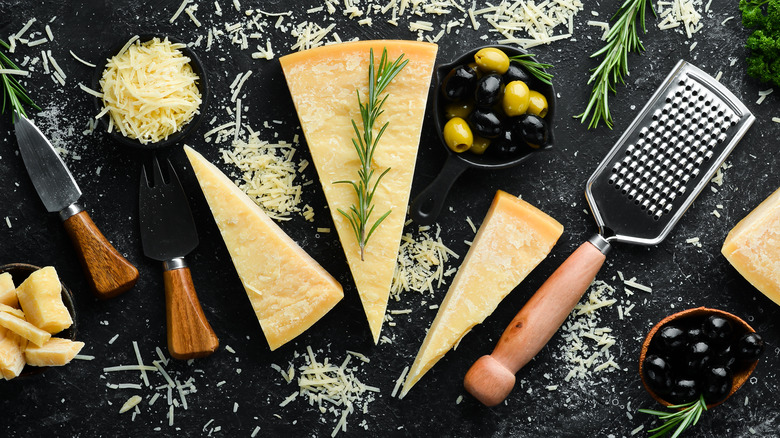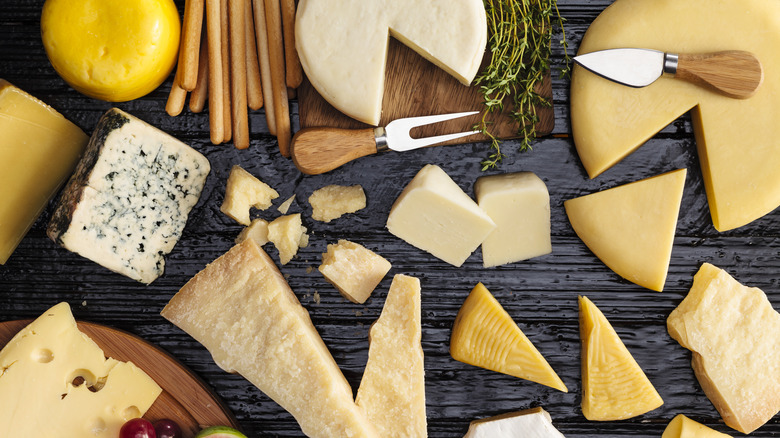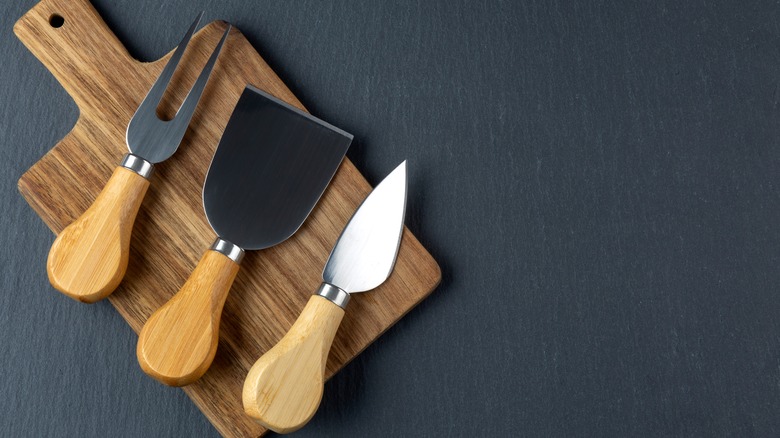Why It's Important To Have Different Utensils For Your Cheese Plate
You've finally decided to take on the exhilarating task of creating your own cheese plate. You've purchased a few cheese varieties, scouring the grocery or local market for the perfect semi-firm, hard, and soft cheeses to round out your plate. The cured meats and accompaniments certainly added to the bill, but they bring a balance of textures and flavors to complement your unique cheeses. Now, you've constructed your ideal board, full of all these eye-catching and mouthwatering treats. All that's left is to serve! But your hard work and money spent could go to waste the moment you realize you only have one cheese knife.
When serving multiple cheeses on your plate, having a few different utensils — ideally one for each cheese — is essential. If you're serving a large group at a party, having only one utensil on hand will keep hungry guests waiting to take turns constructing their perfect bite. Having multiple utensils allows the serving to run more smoothly. But most importantly, different utensils for each cheese on the plate are key to avoiding cross-contaminating flavors and ensuring you're properly slicing each cheese shape.
Avoiding overlap of distinct cheese flavors
Cheese lovers and cheesemongers can agree: Each cheese is made and aged specially to develop its unique qualities, from flavor profiles to texture to smell. Some cheeses are alike, but in the end, each one stands on its own. Just as you don't want to mask the notes of your delicate aged cheeses by pairing them with a powerful pepper jelly or garlicky cracker, you also don't want to contaminate one cheese's flavor with that of another.
Take, for example, a cheese board featuring an aged cheddar as well as a pungent, washed-rind cheese. You don't want to dig into a bite of that washed-rind cheese and immediately use that knife for a slice of the cheddar. You'd essentially be eating the same cheese twice, as the intense flavor of the washed rind will completely mask the taste of the cheddar. By having a different cheese knife next to each cheese on your board, you ensure this cheese crisis is averted.
A proper knife for every cheese
The world of cheese cutlery is endless, just like the world of cheese itself! Each cheese knife is designed to match different kinds of cheeses, making for a smooth carve with little residue left behind. In other words, one knife just won't cut it.
Soft cheeses do well with a skeleton knife, sometimes also known as a soft cheese knife, due to the holes within the blade that prevent the cheese from sticking when slicing. This means you won't have to use another utensil to scrape the cheese slice off the knife; it should fall off easily. A cheese cleaver, on the other hand, is perfect for your firm cheeses that need a bit of a heftier tool to cut through them. And for your aged and semi-hard cheeses, go for a flat cheese knife that'll cut through the cheese vertically and with ease.
Separate cheese knives are a worthy investment for your cheese board to ensure you get the most out of your prized, unique cheeses. Make sure you taste every cheese's unique flavor and set each slice up for success by researching specific knives for each cheese you choose. It'll take your board to the next level in both presentation and taste.


